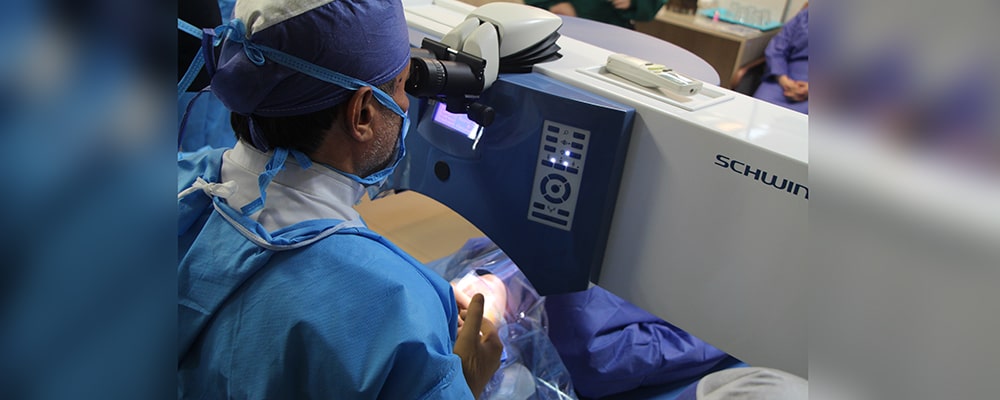
Lasik eye surgery
To see, light must be focused and an image be created on the retina by the help of cornea. It works like the lens of a camera to create an image on film. Sometimes the image we see is blurred or distorted because of the imperfect shape of cornea and eye. These errors are called refractive errors, which are three types:
- Myopia (nearsightedness)
- Hyperopia (farsightedness)
- Astigmatism
To compensate these imperfections, glasses or contact lenses were designed. Refractive surgery is a set of procedures that improve the focusing power of the eye. LASIK, Laser-Assisted in Situ Keratomileusis, is the most common type of laser eye surgery. It is used to treat refractive errors.
LASIK surgery procedure
In LASIK procedure the surgeon starts instilling eye drops to numb the eye. Then he opens the eyelids using an instrument called a lid speculum. The surgeon should create a thin flap of tissue in the external layer of cornea. He can reshape the cornea with a computer-controlled laser. After some minutes, he repositions the flap. This acts like a bandage and the eye would heal on its own within hours.
People experiencing this surgery may feel pressure on the eye, itching or a little burning, but the surgery is not usually painful.
Symptoms and Detection
You may ask what are the signs and symptoms of refractive errors. Most common symptoms are:
- Blurry, distorted, or fuzzy vision
- Double vision
- Haziness
- Glare or halos around bright lights
- Squinting
- Headaches
- Eye strain
Complications
One of the common complications of LASIK is dry eyes. Studies show that significant number of patients who had LASIK surgery, would have a decrease in tear production which can cause eye discomfort and dry eye. We can treat the dry eye with instilling eye drops.
why do this surgery cause dry eye?
Specialists suggest different reasons for people getting dry eye after having LASIK surgery. One reason is damage to the corneal nerves which are disrupted both when the surgeon creates the corneal flap and when the laser reshapes the cornea. Another possible cause is damage to cells in the eye, called goblet cells, by the creation of the corneal flap. Inflammation to the nerve endings is also another reason for dry eye, or make its complications worse.
Other risks
During the first few days after LASIK surgery, some discomforts like light sensitivity and mild irritation is normal. During the first weeks you may experience halos, glare, hazy vision, double vision and vision’s sharpness may be reduced. In many cases, these problems will disappear completely within the first months.
During the surgery procedure, the LASIK flap may fail to stick properly to the eye’s surface or some microscopic wrinkles could develop in the flap. These kind of complications cause visual deviation and distortion. For pregnant patients or those who have hormonal imbalances, vision might return to pre-surgery levels slowly. Another complication is irregular astigmatism that will be caused by a curved corneal surface which is not equal. That may also happen if the laser correction is not properly centered on the eye.
- Blurry, distorted, or fuzzy vision
- Double vision
- Haziness
- Glare or halos around bright lights
- Eye strain


Reviews
Number of pending reviews15225